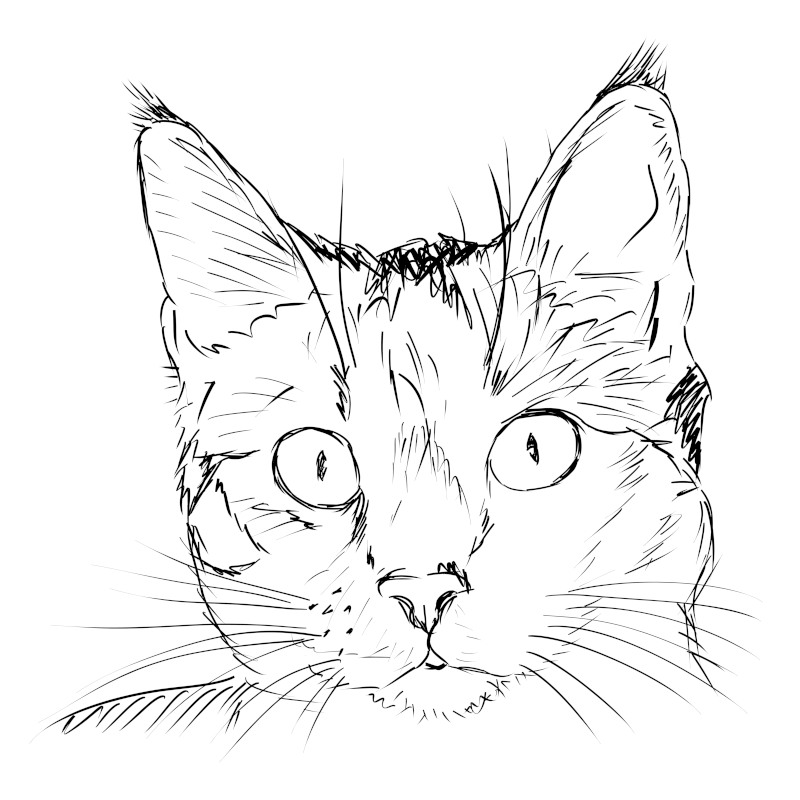 Buy Art Prints Now
Buy Art Prints Nowfrom Amazon
* As an Amazon Associate, and partner with Google Adsense and Ezoic, I earn from qualifying purchases.
This article features a number of easy drawing ideas, for beginners and more experienced sketchers. We feature a variety of things that are easy to draw, covering portraits, animals, insects and more.
Introduction to Easy Drawings
All artists begin from humble beginnings, as even the likes of Picasso, Leonardo da Vinci and Michelangelo would have started from nothing before slowly developing their drawing skills over time. In order to understand the basics, one must start with relatively easy ideas, and then add layers of complexity as each stage is mastered - this is the best approach for learning anything new. With art, one should reduce elements down to simple components, and one example of this might be tracing an existing image with just a few lines of a pencil.
Alongside our list below of easy things to draw, we have included discussion on a number of points around this topic, including tips and techniques for beginners who are choosing between different styles and mediums. There is also some advice on dealing with problems that will inevitably occur as you practice your drawing skills as a beginner, such as how to improve through practice, observation and also studying some of the great masters of art history.
List of Easy Drawings and Paintings
Browse below for a fine selection of drawings and paintings in which the simplest, quickest and easiest of drawings can be found. There is none of the high level of detail that the great masters would achieve once their techniques had evolved, and these are more akin to early child sketches as they learn how to master the use of a pencil or crayon. The styles are often abstract for that reason, with detail reduced down to a manageable level for even the youngest of artists.
For those looking for ideas on what to draw easily, the long list of images below will give you plenty of inspiration, with examples of how you might even complete the drawings themselves. Practice is key, and so don't get despondent if your first drawings are not satisfactory, just keep practicing and perhaps ask others on how you might improve in future sketches. We have purposely chosen subjects below that can be easy to draw, when simple techniques are used.
How to Draw a Simple, Easy Cat Sketch
This charming cat sketch displays the individual lines of pencil that were slowly built up over time in order to produce the overall cat drawing. In order to draw this relatively simple artwork, artists should start by simply adding the key elements in light strokes, such as the eyes, ears, nose as well as the outline of the face. Once these have been compared to correct image that you are working from, then you can proceed onwards and start to add more detail. Notice in this image how the artist has added further lines to accentuate the eyes, once they were happy with the initial lines.
For those who consider themselves total beginners, it may be worth tracing the outline of the face, and the key elements in order to ensure accuracy, before then working in other details, such as the pattern of the fur, with stripes running between the cats ears, and also across the sides of its face. One you have completed a number of easy cat drawings, one might be able to construct them without referring so closely to other images, and work directly from your mind and personal experience by that point. Cats remain popular domesticated animals and are often used as inspiration for early artworks for drawing newbies.
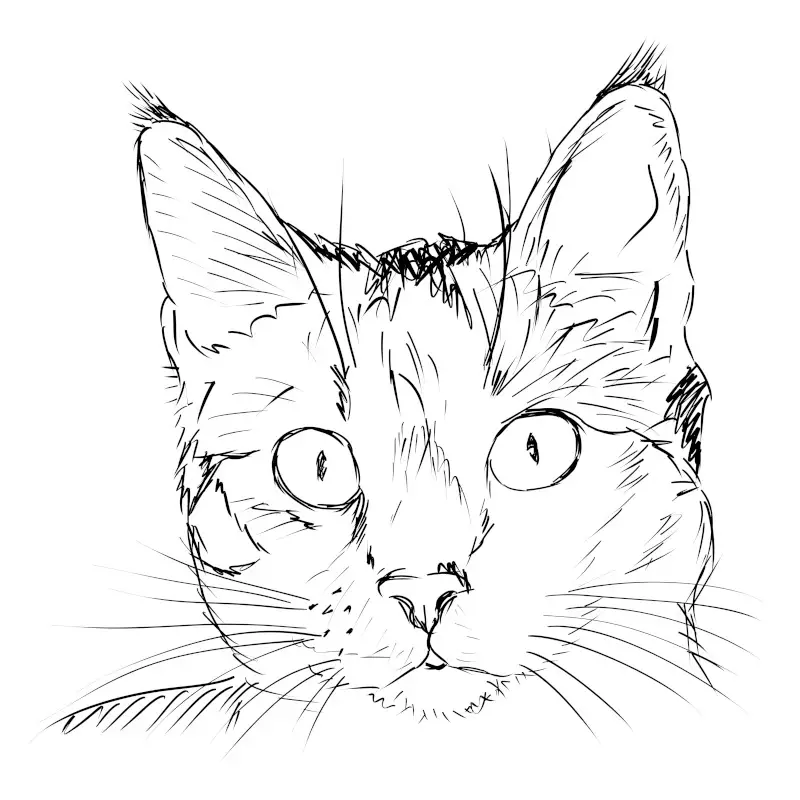 How to Draw a Simple, Easy Cat Sketch (copyright-free image courtesy of Rawpixel)
How to Draw a Simple, Easy Cat Sketch (copyright-free image courtesy of Rawpixel)
How to Draw Couple Portrait Quickly
Easy figure drawings are popular with beginners, but in this example we focus on two head portraits, and see how they can be delivered with just a few, well thought-out lines. We find two faces opposing each other, in a romantic or friend-based picture. Noses touch in this intimate display, though the two faces are also near-identical in their physical features. It would appear that each head is constructed from a single line which runs continuously to complete each element of this side profile.
In order to work in this manner it is advisable to cover each element separately, before later attempting to cover everything in a single line. This artistic style is challenging, and highly creative, but would be tricky for those unfamiliar with depicting the human face. Mistakes can be spotted by us all, due to our natural understanding of the human face, from our own experiences, and so practice is required for this particular genre. Illustrative work such as this can work well with digital art, using their tools to construct and amend images such as this.
 How to Draw Couple Portrait Quickly (copyright-free image courtesy of Rawpixel)
How to Draw Couple Portrait Quickly (copyright-free image courtesy of Rawpixel)
Drawing a Bird with Ease
This early 20th-century drawing features a cartoon-like interpretation of a bird, most likely a dove. The artist achieves a sky scene with just a few lines, with a sun emerging from behind the bird as it flies through the air. Other than for the addition of its eye on our nearest side, the bird is constructed from a single line, which creates its two wings, tail and head. The artist loved to keep things simple in many of his drawings, but was capable of working in more detail when painting. There is also a feather added which provides symbolic value to this highly expressive work.
This approach to drawing flattens perspective and attempts to create form from minimal detail, relying on our existing knowledge of the different elements in this work. Many will see this bird as a great starting point, potentially tracing or mimicing the work themselves in order to create their very first bird drawing. Despite the relaxed nature of this piece, the curves of the wings and body of the bird are beautifully delivered, suggesting the artist had an effortless brilliance to his work which may have partially been developed through regular practice across his career.
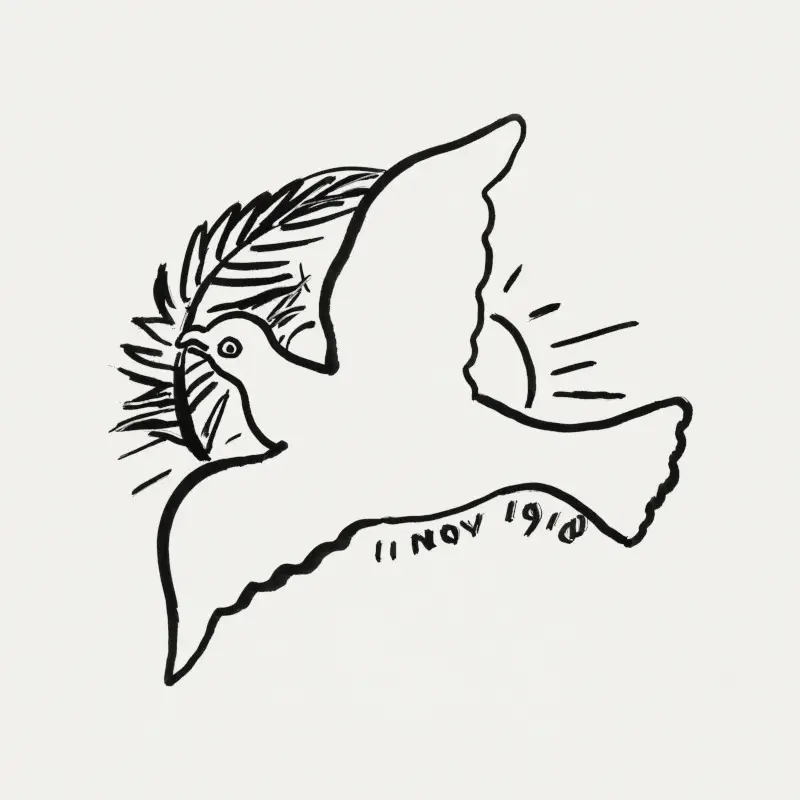 Drawing a Bird with Ease (copyright-free image courtesy of Rawpixel)
Drawing a Bird with Ease (copyright-free image courtesy of Rawpixel)
Quick Drawing of a Butterfly
To complete an easy drawing of a butterfly, you should focus on just the key details. Start with the central part of the insect, its main body. Then add some outlines for the wings, adding it antennae at the end. This should be enough to give a recognisable butterfly, but for those wanting to go further, you can then observe and attempt to replicate the patterns of its wings, potentially even added adding color as you go. The patterns themselves can be particularly intricate, and are so best avoided for beginners, though you might allow yourself just to work expressively, and generate patterns of your own.
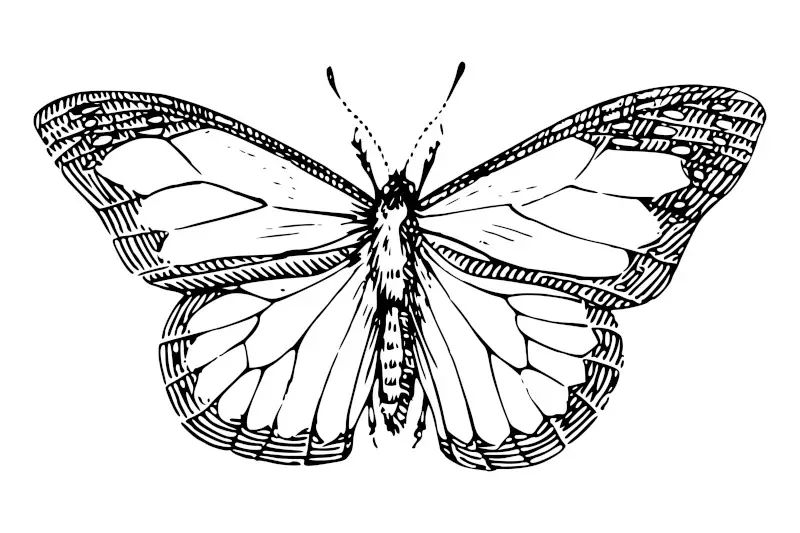 Quick Drawing of a Butterfly (copyright-free image courtesy of Rawpixel)
Quick Drawing of a Butterfly (copyright-free image courtesy of Rawpixel)
Quick and Simple House Sketch with Colors
Children will often gain an introduction to painting and drawing by depicting houses in art. Typically, these will feature a door, windows and roof, just as seen in the image featured here. It can also be a way for them to capture their own lives, as they will often have a small garden besides the home, and perhaps add their parents or grandparents. In the example shown below, this offers an easy way to put together the key parts of the home to make it look realistic, with some extra detail included such as a small chimney and a letterbox, with other design flourishes around the door frame.
For absolute beginners, easy house drawings do not need to be perfectly accurate, and some elements will be sized incorrectly in relation to others - this is normal. For children, it is great just to encourage the use of pencils or crayons, which can develop their muscles, and also to use their creative mind. Once the simplest of outlines have been used, it is fine to experiment with color too, such as with the colour of the door, or plants in the garden.
 Quick and Simple House Sketch with Colors (copyright-free image courtesy of Rawpixel)
Quick and Simple House Sketch with Colors (copyright-free image courtesy of Rawpixel)
Easily Draw a Succulent Plant in Pot
This super simple sketch features a succulent or cacti plant within a small plant pot. The artist focuses on achieving this image with as few lines as possible, though still adding enough that we can identify the subject in this artwork. It is good to learn how objects can be reduced down in this manner, with just the key details being covered. Some might even be able to identify the plant species, from the shape of the leaves. The artist adds some small details to suggest a use of stone lying on the surface of the soil, which helps to control water flow, and leaves the pot entirely devoid of detail, other than its curved shape.
 Easily Draw a Succulent Plant in Pot (copyright-free image courtesy of Rawpixel)
Easily Draw a Succulent Plant in Pot (copyright-free image courtesy of Rawpixel)
Easy Stegosaurus Dinosaur Drawing Inspiration
This fun sketch is child-like in manner, and incorporates two main colors. It is likely that this is an interpretation of a Stegosaurus, judging by its shape, the length of its limbs, and also the bony plates that line its spine, head and tail. Easy dinosaur drawings are popular with children, who are regularly attracted to these creatures, and will already be familiar with them from their own kids' books. This particular artwork could be constructed on a tablet device, and then colored in using software, and potentially even re-used on other mediums and merchandise, if the artist desires.
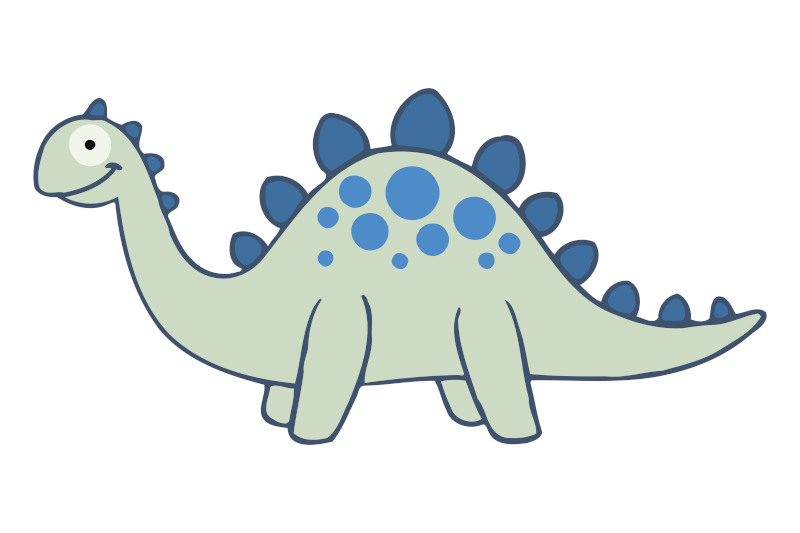 Easy Stegosaurus Dinosaur Drawing Inspiration (copyright-free image courtesy of Rawpixel)
Easy Stegosaurus Dinosaur Drawing Inspiration (copyright-free image courtesy of Rawpixel)
Guinea Pig - Easy Idea to Draw
We have included a guinea pig drawing within this article because of how popular they are with children. Many will keep them as pets, and therefore perhaps want to draw one themselves when starting out as an artist. This simple guinea pig drawing shows the nature of this animal, with relatively little detail to cover, and its overall shape being key. It may not be the most challenging or aesthetically interesting of animals to draw, but a number of its features are similar to other animals that you could move on to afterwards. For example, its head is similar to that of a rabbit, and its body shape could be re-used for a common mouse without having to change an awful lot.
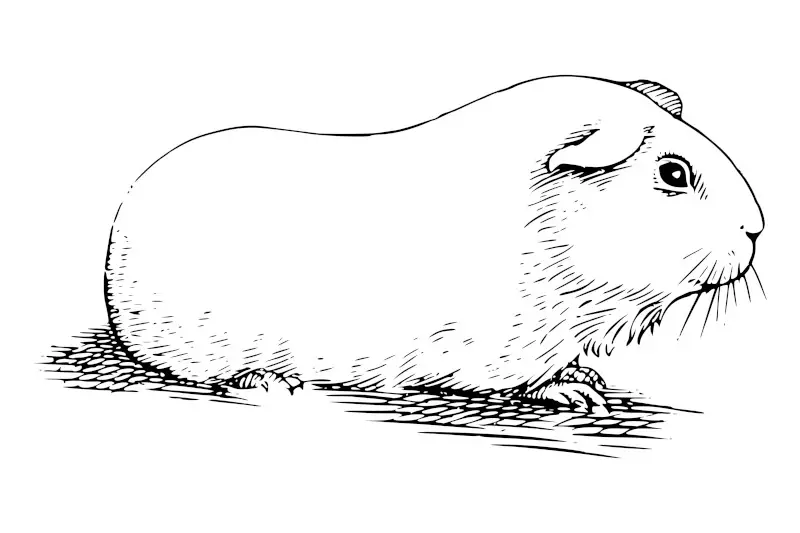 Guinea Pig - Easy Idea to Draw (copyright-free image courtesy of Rawpixel)
Guinea Pig - Easy Idea to Draw (copyright-free image courtesy of Rawpixel)
Airplane Easy Drawing Idea
Perhaps one of the most challenging drawings in this article would be of an airplane, with a charming example of a vintage plane included below. Man-made structures often feature straight lines and sharp edges which are harder to capture than more organic curves. Simplicity is key too, for beginners, and the drawing below may be a little too complex for those attempting to learn the basics. Perhaps start with the outline of a plane body, wings and tail, before worrying about more detailed parts such as the engine, rotor, or landing wheels. Alternatively, you might concentrate on small plane silhouettes within a sky scene, just as with birds flying in the distance.
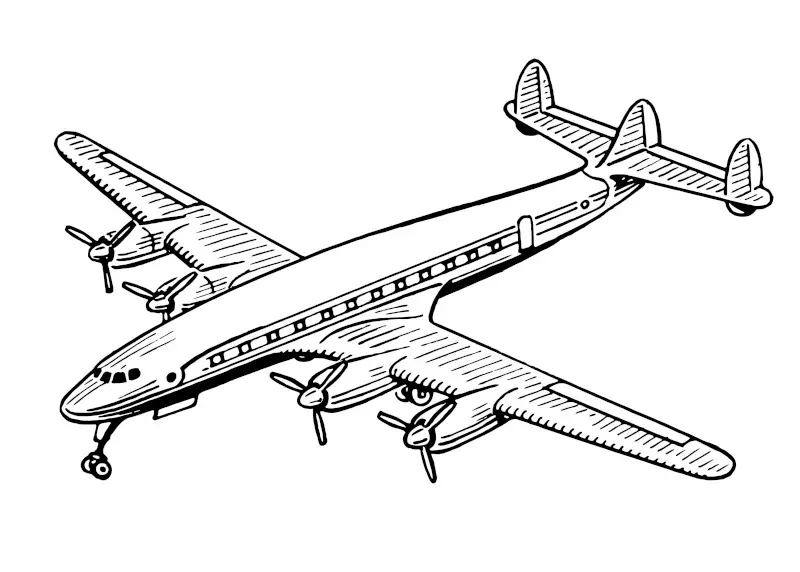 Airplane Easy Drawing Idea (copyright-free image courtesy of Rawpixel)
Airplane Easy Drawing Idea (copyright-free image courtesy of Rawpixel)
Elephant Drawing for Children
This charming drawing of an elephant does not attempt to capture the animal in a precise manner, but is instead more of a cartoon-like style. The proportions are not accurate to a typical elephant, yet it is close enough for us to understand and identify what it is of. The artist behind this drawing worked in the early 20th century and covered many animals across his oeuvre, as well as flowers, other plants and also figurative work. Whilst he liked working in this contemporary, minimalist manner, he also produced much more complex paintings at other times in his career.
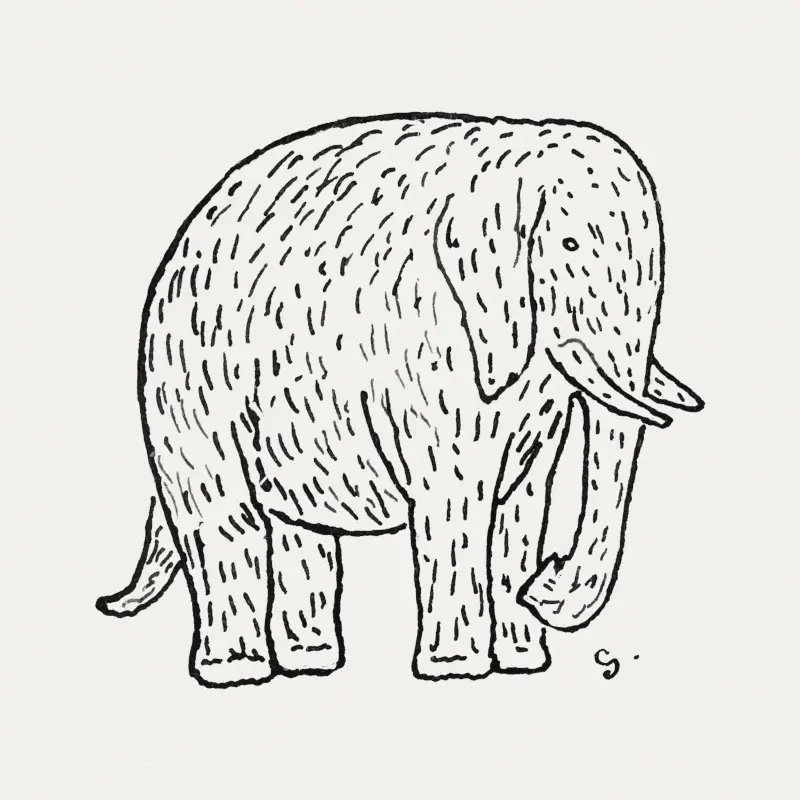 Elephant Drawing for Children (copyright-free image courtesy of Rawpixel)
Elephant Drawing for Children (copyright-free image courtesy of Rawpixel)
Easy, Simple Rose Flower Sketch for Beginners
Here we find a large outline of a rose flower which could be used as a basis for learning about how to draw roses. The individual petals are outlined, along with some detail on the stem and leaves of the plant, but everything is kept to a minimum. This type of drawing could be used as a coloring exercise, with children filling different elements with tones of red and green, or anything else they might prefer. Over time, after considerable practice, many artists will be able to work without any of these aides, just directly from observation and experience.
 Easy, Simple Rose Flower Sketch for Beginners (copyright-free image courtesy of Rawpixel)
Easy, Simple Rose Flower Sketch for Beginners (copyright-free image courtesy of Rawpixel)
Flower Vases Easy Drawing Ideas
Here we find a free and easy sketch of two vases, filled with flowers. Notice how the angles are unrealistic, with the artist focusing on a child-like style. Forms are flattened, though this approach to re-shaping angles and perspective also became popular with the Cubist artists of the 20th century. The busy arrangement of flowers is completed with simple shapes, placed closely together, and we can even see an expressive use of line, as the artist presumably worked at a fast pace. Still life art is attractive to artists of all standards, and is an accessible genre which can be completed in an indoor setting, without the need for a model to sit, or an appropriate outdoor environment.
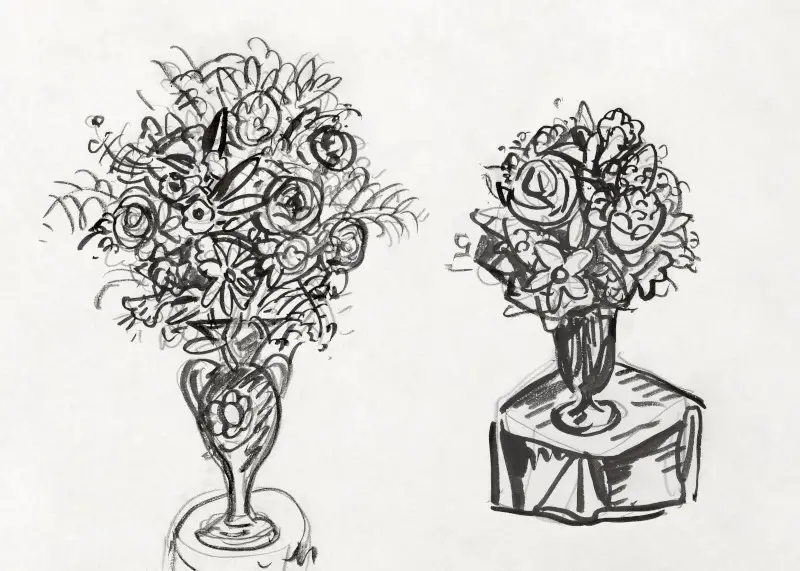 Flower Vases Easy Drawing Ideas (copyright-free image courtesy of Rawpixel)
Flower Vases Easy Drawing Ideas (copyright-free image courtesy of Rawpixel)
Sitting Frog Line Drawing Quick and Easy for Beginners
Many children love frogs, and find them within this own books. Frog art is therefore common with beginner artists, and they will tend to attempt simple depictions that do not become too elaborate too quickly. The drawing below captuers a relatively simple frog drawing and one could even reduce this to an even lower level of detail. Frogs remain so instantly recognisable, alongside toads, that just a few details are enough for us to understand what we are looking at. They are also seen as fun, playful creatures who charm children across books and modern television.
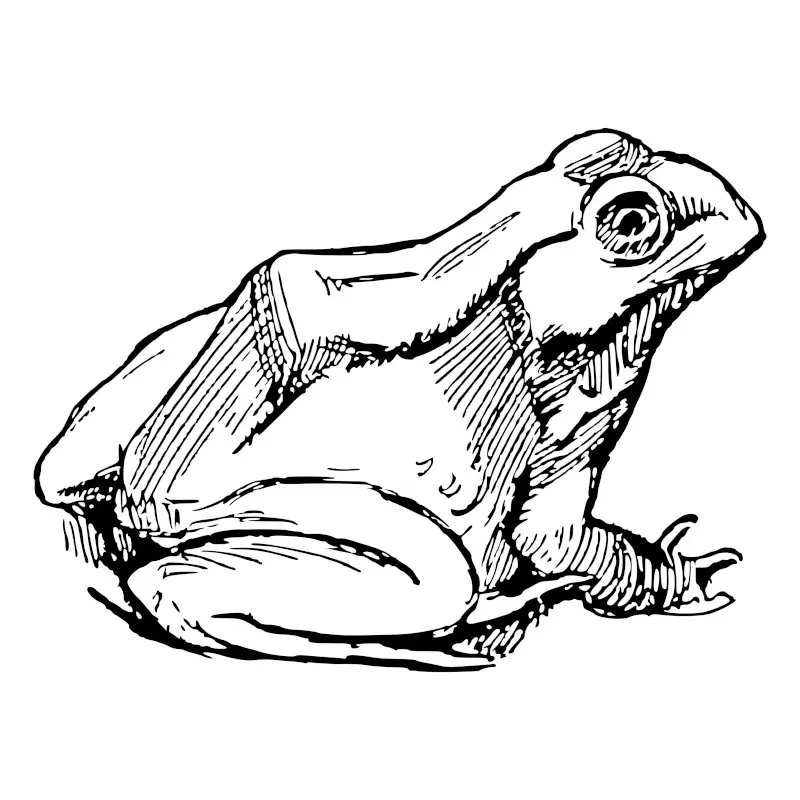 Sitting Frog Line Drawing Quick and Easy for Beginners (copyright-free image courtesy of Rawpixel)
Sitting Frog Line Drawing Quick and Easy for Beginners (copyright-free image courtesy of Rawpixel)
How to Draw a Simple Car
Cars remain highly popular with children, and are regularly covered in beginner's art as a result of this. The earliest, easiest of car drawings will feature just the main body of a car, with its wheels. With different models available, some children will choose to base their designs on their own collection of model cars, or even their parents' real cars. The image shown here captures a classic beetle design, with its curved look proving an iconic look that some may like to draw themselves. As one's skills develop, you can start to add more and more detail, including covers over the wheels, lights, a steering wheel and so much more.
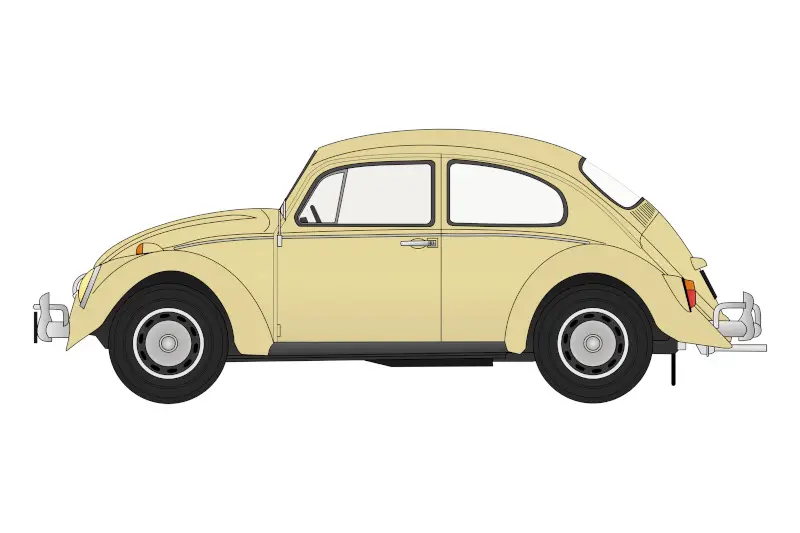 How to Draw a Simple Car (copyright-free image courtesy of Rawpixel)
How to Draw a Simple Car (copyright-free image courtesy of Rawpixel)
Ideas for Easy Drawings
Those new to drawing may not know what to draw, and so below are some ideas for easy drawings to start of with. In all cases, it is advised to reduce elements to their key parts, and perhaps so the same process several times over before you are comfortable with your results. Only then should you move on to adding more detail and complexity, as early failures will sometimes discourage artists from continuing. The simple process of practice and observation is enough to improve by itself.
Many children will have only a limited knowledge of the world when they first start drawing, and these items is what they should call upon for artistic inspiration. These elements cover nature, items that they come across in everday life and also portraits, with facial features of their parents being amongst their earliest of experiences. Tips and techniques for drawing those subjects are included below.
Nature-Inspired Creations
Flowers can help children to understand curves and line, and practice should be centered around capturing individual petals, before placing them together to form a flower head. This process alone will help them to understand how the overall is formed from its component parts. Once that is done, adding stems and leaves is a relatively quick stage, and different flower species will also teach children of the variations that exist across nature.
Landscape views can be accomplished with easy drawings, with single shapes delivering trees from a distance, as well as hills, valleys and flowing rivers. These simple drawings can help a child to understand how different parts of the environment work together. There are then the different elements of the sky which can easily be simplified to clouds, the sun and weather effects like snow and rain. All again, can be achieved with single shapes.
Finally, pets play important roles in many of our lives, and for children this may be their closest experience of animals. These strong bonds will often inspire them to create easy animal drawings, or build their interest in other creatures that they are not as familiar with. Again, most of the more famous animal types, as well as birds and fish can be covered with just a few simple shapes.
Everyday Objects and Still Life
Another method for practicing easy drawings is to make use of everyday, sometimes man-made objects. These can include plates, cups, as well as food types, such as fruit. These will be lying around your house and were used by Cubist and still life artists over the past few centuries. Again start with simple shapes before worrying about texture, shadows, or perspective too much. Those looking to practice regularly could acquire a sketchbook, which will allow you to review your progress over time, as well as refer to past work as a means of study.
Material type is important as items made from glass will present unique challenges, such as the balance of light, and potentially there will be objects behind that show through its transparent surface. This offers opportunities to experienced artists, but should perhaps be avoided for beginners.
Simple Portraits
Portraits are amongst the most challenging of genres, and should be tackled slowly and carefully. There is a near infinite variation in the human face, and the slightest mistake in proportion or perspective can often be spotted, making accuracy important. Beginners should focus on simplicity, using lines to outline the face and include key details, with shadowing coming much later. Challenges to consider include a precise understanding of proportion and the relationship between different parts of the face, as well as movement and expression.
Techniques for Beginners
We have included some techniques and ideas for easy drawings for beginners below, as well as some methods for those who want to then take their work to the next level. Sketchbooks are a great idea for tracking your progress over time, and you might even choose to return to a simple sketch at a later date, adding more detail or even painting over the top.
Outline Drawing
Sketching can be quick, where as contour drawing focuses more on detail. Beginners should probably stick to the former, rapidly putting together lines and shapes to form the main structure of their work. Once these components have been used several times over, you might then move on to the contour approach, where slower lines are more closely inserted, adding shading and variations in intensity. This gives a depth to your work and allows it to more accurately match what we see with our own eyes.
Hatching and cross hatching are techniques used to describe this greater detail, where lines can be placed in parallel, or at right angles to produce a variety of effects. The distance between the lines can also indicate the characteristics of each surface, with undulations or flat sections. Additionally, the Japanese painters who used pen and ink were skilled in varying line thickness, and understood the different impacts that this could have.
Shading and Blending
As you move forwards from easy drawings, techniques of highlight, midtone, and shadow areas can be used to advance your work. The use of different techniques across the same artwork, when used skillfully, can produce all manner of different effects, without necessarily requiring much more work. Negative space principles can also help to access the viewer's mind to fill in blanks. Some sketchers will also smudge elements deliberately to merge lines together.
Coloring Your Creations
Limited palettes are best off for beginners, as they bring consistency and balance. As your work progresses, you can bring different atmospheres to your work, depending on the types of palette that you use, such as warm or cold tones. You might even deliberately clash your colors, as was popular with the Fauvists, who wanted to work against pre-establshed working norms and forge their own paths. Color mixing can then come into play when incorporating watercolors, acrylics or oils, and these can even be added over the initial drawings, which is a practice used by painters since the Renaissance, and likely even before that.
Building Confidence and Improving Your Skills
Practice is the best way of building confidence. Friends and family may be able to sensitively provide feedback, and give suggestions on improvements as you go. Observing elements for long periods will help you to better understand them, and also practicing simple methods before moving on should ensure that you have mastered each stage of development. Simplicity is key at the start, and when you have achieved some success, your confidence will naturally start to build. For parents, it is good to give mainly praise at the start, so that children are encouraged to keep practicing, rather than being too critical from the off.
There are also many publications which can help master specific techniques, though in the early stage freedom and creativity should be encouraged as much as possible, to avoid just copying the work and methods of others. Without the same level of innovation and personal expression, many would not enjoy art in quite the same way.
Practice Makes Progress
As mentioned elsewhere, even the great masters would practice their craft again and again, accepting that this was the only way to produce high level drawings. It also has the advantage of getting the brain used to certain practices, where something can become highly familiar in our minds after it has been drawn many times over. Perhaps the key to avoiding boredom is too move on as quickly as you become comfortable, adding extra elements each time, or then experimenting with different techniques and mediums as your work progresses.
Exploring Different Styles and Mediums
As one's confidence grows, children and adults alike can start to experiment with different styles and mediums. The most obvious is to make use of more advanced drawing techniques, such as hatching, cross-hatching and contours. Beyond that, you might wish to move into painting, where the basic techniques of drawing can be very beneficial. Pen and ink fits somewhere between the two, whilst watercolors can allow your original drawings to still show through, even when painted over the top. Oils will ultimately cover your pencil sketches, but will be aided by the initial strokes of line and form.
There is also a wealth of different subjects to take on, even with very easy drawings. For example, if you feel you have mastered the challenging methods of portraiture or figurative art, then why not take on landscape sketches which can be performed outdoors? Or perhaps you might go for still life works around your house, as well as capturing your pets. Beyond this, you might experiment with different angles and perspectives, or even pushing into abstract forms, where your mind can truly take over and express itself. It might be worth observing different art movements for new ideas, too, such as the Expressionists, Impressionists, Romanticists and the Baroque era for alternative methods and styles.




